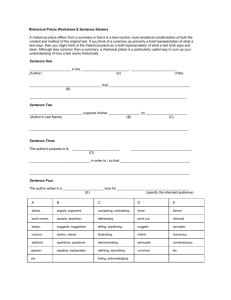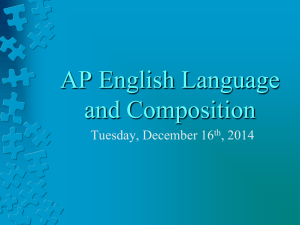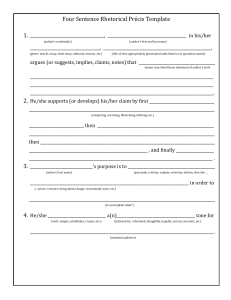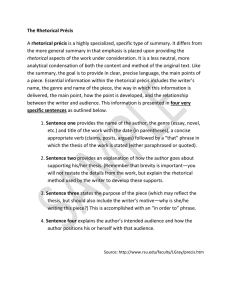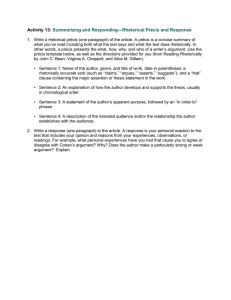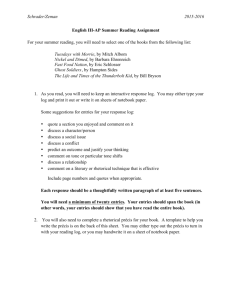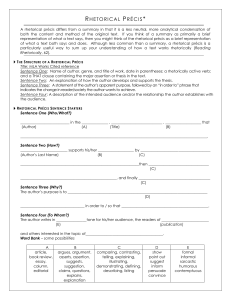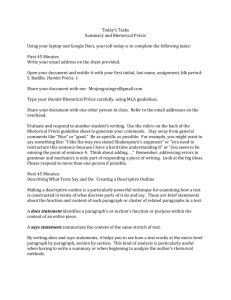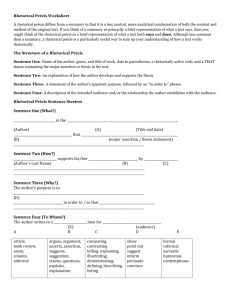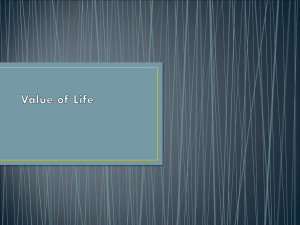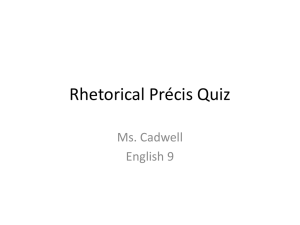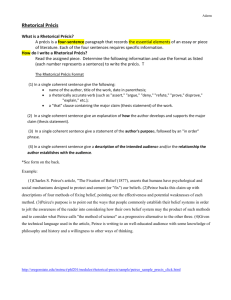Rhetorical Précis Worksheet - Bakersfield College Writing Center
advertisement
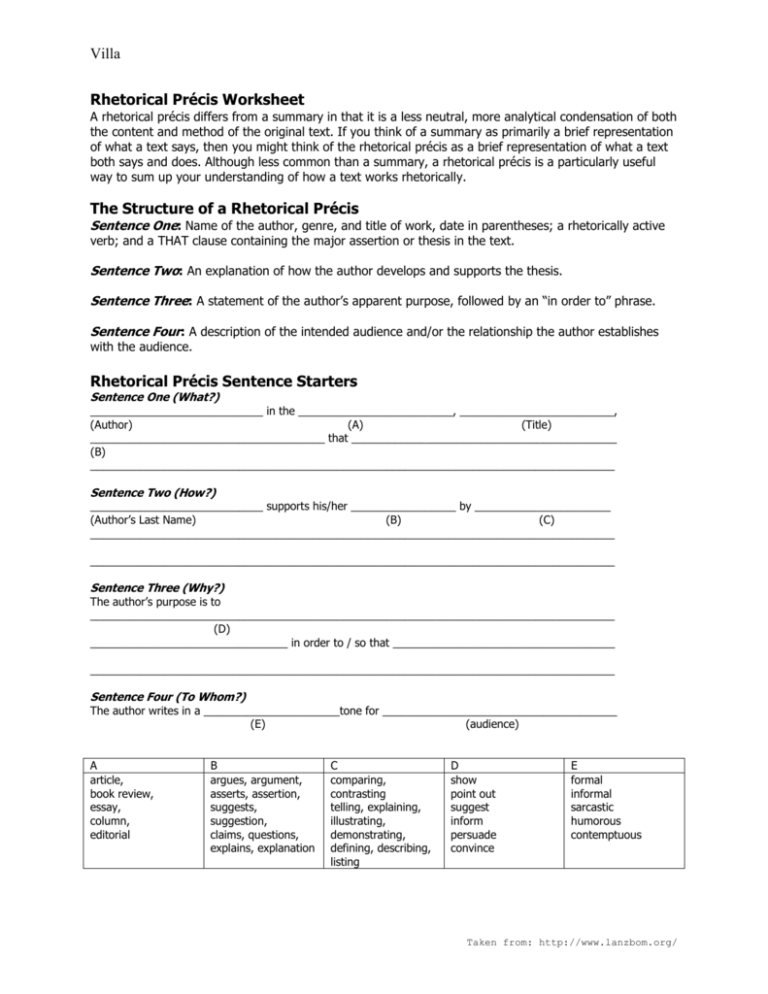
Villa Rhetorical Précis Worksheet A rhetorical précis differs from a summary in that it is a less neutral, more analytical condensation of both the content and method of the original text. If you think of a summary as primarily a brief representation of what a text says, then you might think of the rhetorical précis as a brief representation of what a text both says and does. Although less common than a summary, a rhetorical précis is a particularly useful way to sum up your understanding of how a text works rhetorically. The Structure of a Rhetorical Précis Sentence One: Name of the author, genre, and title of work, date in parentheses; a rhetorically active verb; and a THAT clause containing the major assertion or thesis in the text. Sentence Two: An explanation of how the author develops and supports the thesis. Sentence Three: A statement of the author’s apparent purpose, followed by an “in order to” phrase. Sentence Four: A description of the intended audience and/or the relationship the author establishes with the audience. Rhetorical Précis Sentence Starters Sentence One (What?) ____________________________ in the _________________________, _________________________, (Author) (A) (Title) ______________________________________ that ___________________________________________ (B) _____________________________________________________________________________________ Sentence Two (How?) ____________________________ supports his/her _________________ by ______________________ (Author’s Last Name) (B) (C) _____________________________________________________________________________________ _____________________________________________________________________________________ Sentence Three (Why?) The author’s purpose is to _____________________________________________________________________________________ (D) ________________________________ in order to / so that ____________________________________ _____________________________________________________________________________________ Sentence Four (To Whom?) The author writes in a ______________________tone for ______________________________________ (E) (audience) A article, book review, essay, column, editorial B argues, argument, asserts, assertion, suggests, suggestion, claims, questions, explains, explanation C comparing, contrasting telling, explaining, illustrating, demonstrating, defining, describing, listing D show point out suggest inform persuade convince E formal informal sarcastic humorous contemptuous Taken from: http://www.lanzbom.org/ Villa Leyva 1 Natalia Leyva Professor Beach Education 200 11 September 2011 Rhetorical Précis In the article “End Homework Now” (2001), Etta Kralovec and John Buell claim that the practice of assigning homework is not an effective teaching method because its negative effects outweigh its benefits. Kralovec and Buell support their claims by providing examples of how homework disrupts families, overburdens children and limits learning and by dispelling myths about the benefits of homework and providing alternative practices that would lead to improvement in student achievement. The authors’ purpose is to make the reader question a practice that is a trademark of the U.S. education system and decide whether it is conducive to creating a “smarter” student. They seem to be speaking to the entire educational community: administrators, teachers, students and parents. Taken from: http://www.lanzbom.org/
